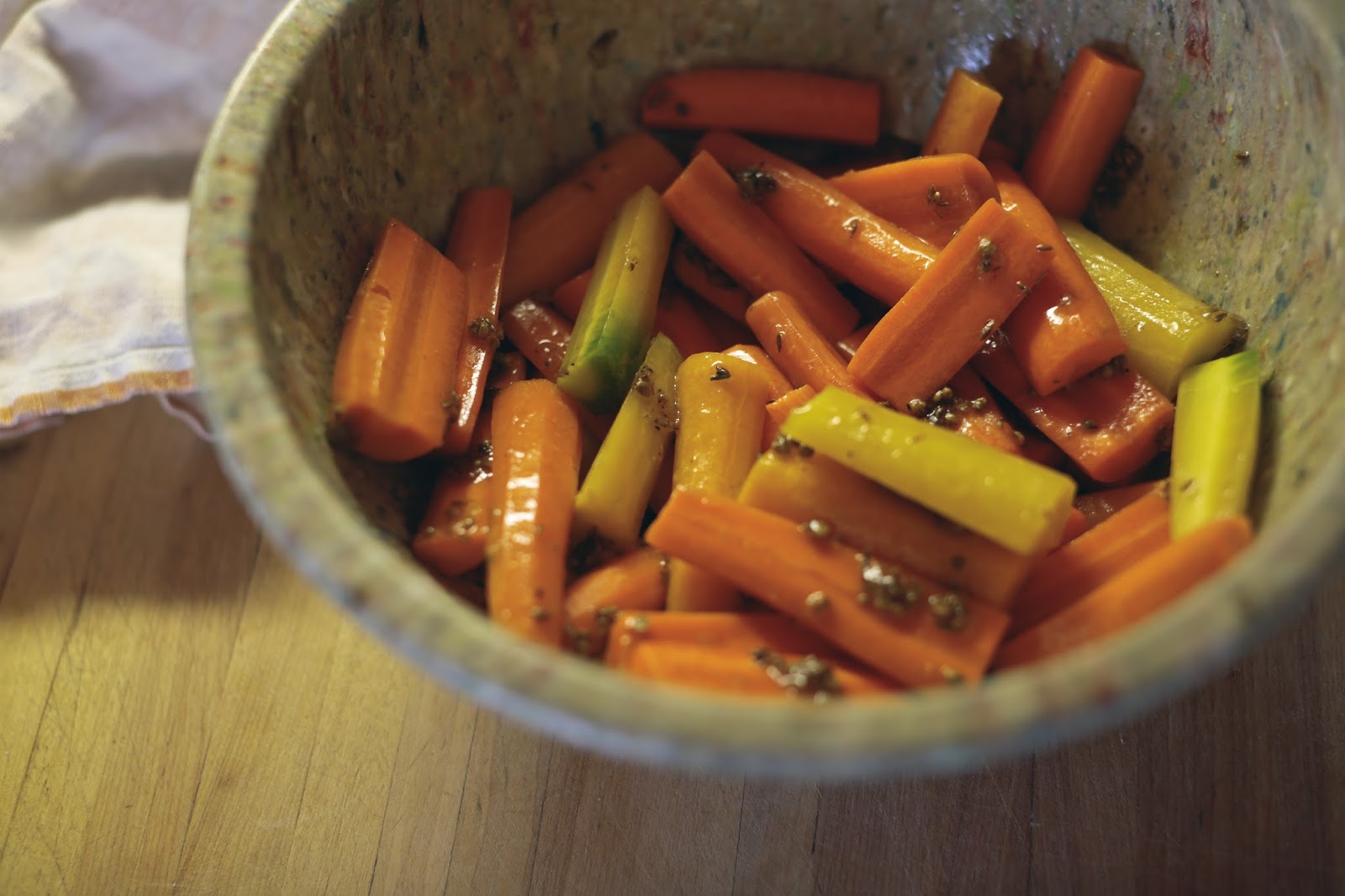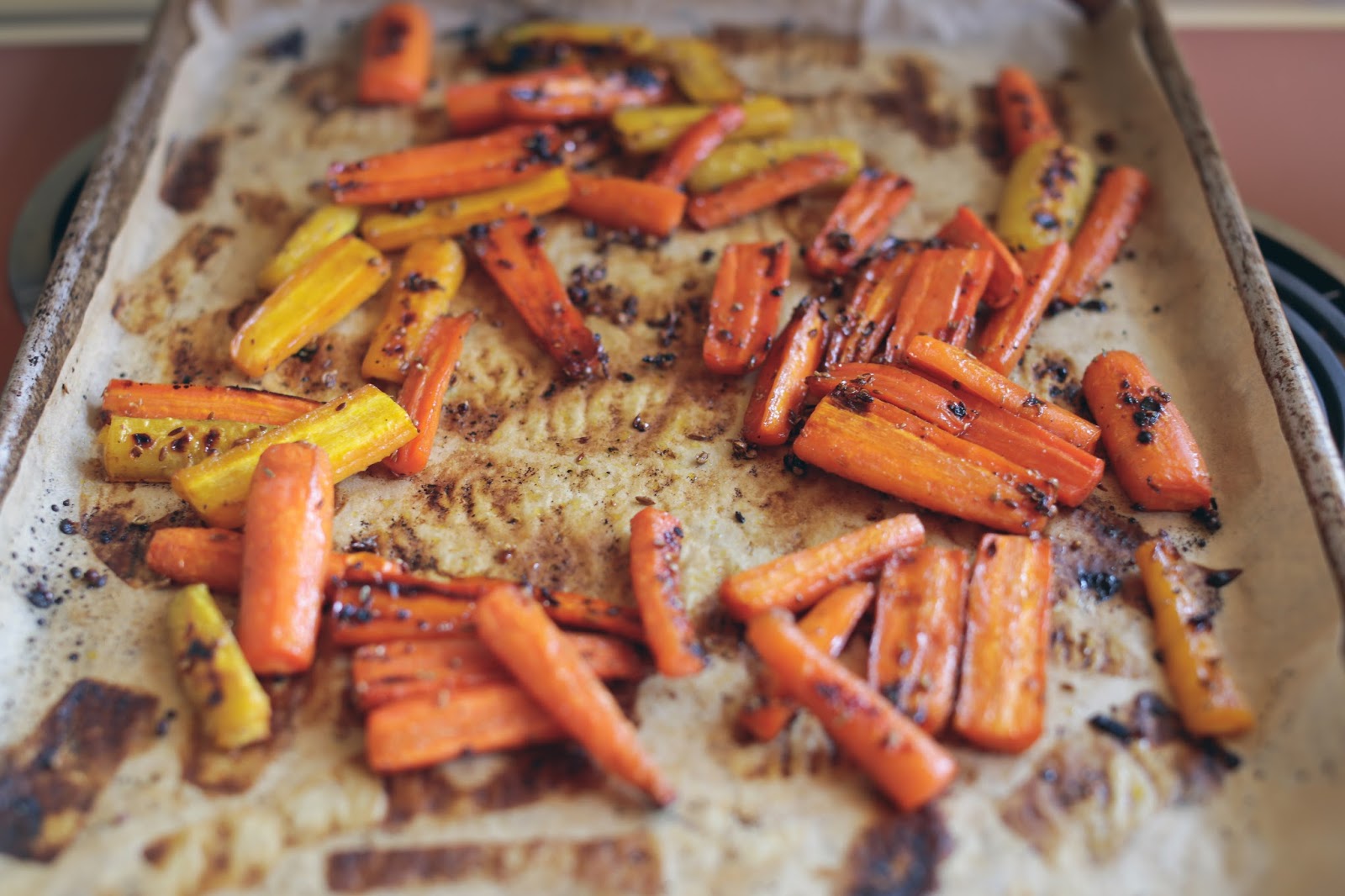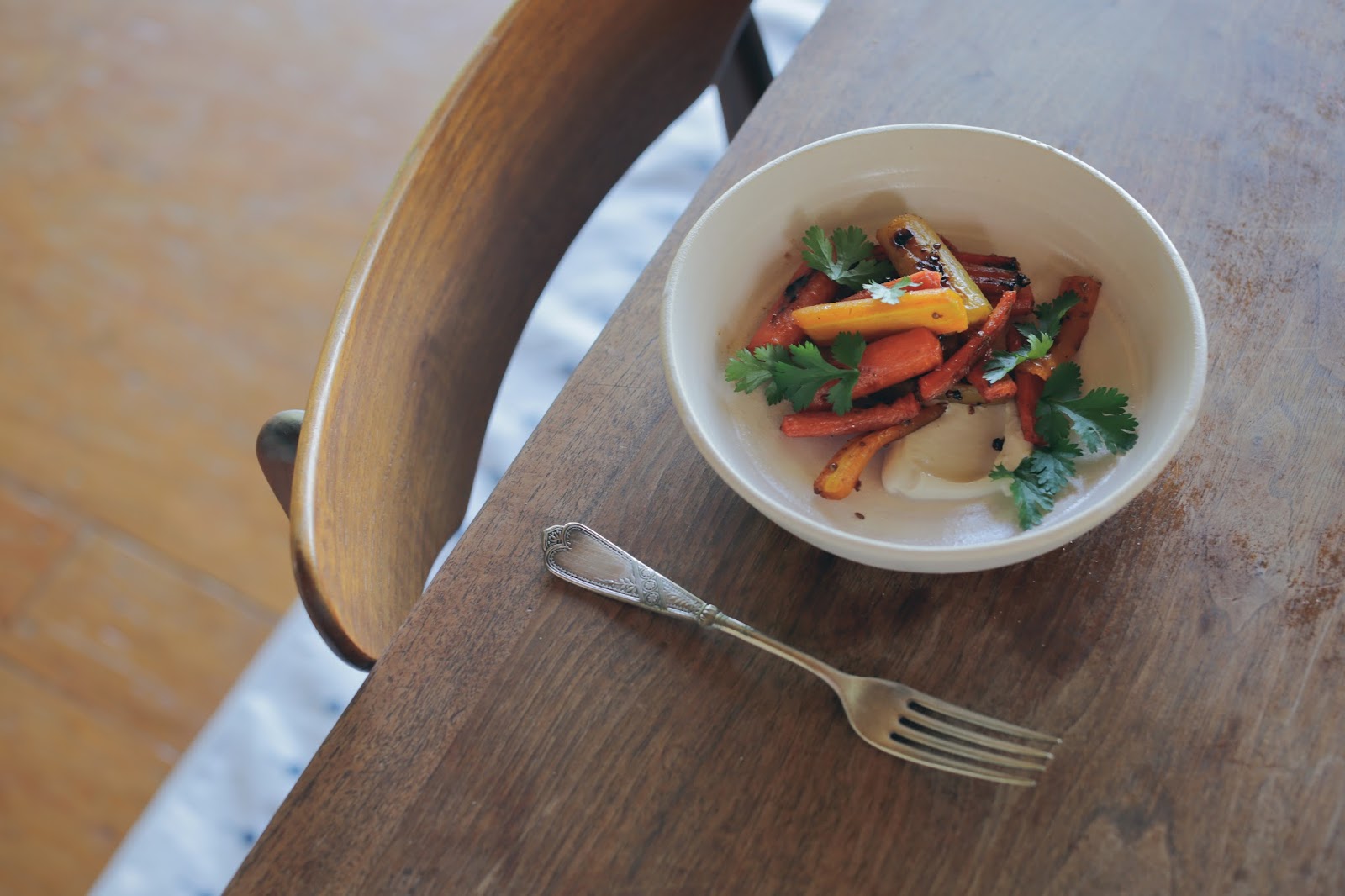Here was an opportunity
One evening last week, my friend Sarah sent me a sudden text that said only, “Yotam Ottolenghi. Carrot and Mung Bean Salad from Plenty More. Just do it!” These kinds of vital communications are why humans need one another: so that we know what to eat next.
I was skeptical about the mung beans: I know they’re used to great effect in many cuisines, I know, I know, but a certain aura of patchouli and tie dye hangs over them. Still, I was willing to reconsider. I took down my copy of Plenty More from the top of the refrigerator, where my favorite and most-used cookbooks live. (Hey: another time when I mentioned this fridge-top collection, one of you asked if I would consider writing a post about the books I keep there. Does that still interest you? I’d forgotten about that request until now, but really, I’d be very happy to do it. Update: I am an idiot. I forgot about this post on Serious Eats! That said, the top of the fridge looks quite different today, with new books coming out, and I would be happy to tell you about it.) I turned the book over and flipped to the index, looked up the page number (169) for the recipe, and proceeded to thumb backward toward it, but I overshot the mark and found myself on page 163 instead, looking at a recipe for Honey-Roasted Carrots with Tahini Yogurt.
I paused long enough to skim through the ingredients. I had everything, as it happened, including a fresh bag of carrots and a newly opened container of tahini left over from another recipe and now waiting to be finished. I am famous within the four walls of my house for buying tahini, using approximately two tablespoons, and then entombing the remainder at the back of the fridge for a couple of years. Here was an opportunity to do something different. The mung beans could wait. (They’re still waiting, and waiting, and waaaaaaaaiting…)
You do not need me to tell you how smart, how good, and how necessary Yotam Ottolenghi’s Plenty More is. Plenty was seminal, and I think Plenty More is even more important. This particular recipe reminds me a lot of Casa Moro’s Warm Butternut and Chickpea Salad with Tahini, but maybe better. Ottolenghi uses carrots instead of squash and, instead of allspice, freshly toasted coriander and cumin seeds. His spicing feels more special as a result, more fragrant and beguiling, and the carrots get sticky-slick with honey, and the yogurt in the tahini sauce gives it both lightness and heft. To be totally honest, Ottolenghi did call for a little too much coriander for me – coriander seed, like marjoram, can start to taste the way potpourri smells – so I scaled it back when I typed up the recipe below, and I think it’s just right. Next time, I might add chickpeas and red onion, à la Casa Moro, and make a great thing greater.
In any case, I made it for lunch on a day when I had the house all to myself – and had celebrated having the house all to myself by eating a gigantic slice of cinnamon-custard twist from Larsen’s for breakfast – and it was exactly what I wanted. It’s more than the sum of its parts, by far: one of those things that you can zap together without a trip to the grocery store and, afterward, makes you feel like putting on the Chariots of Fire theme and taking a victory lap around the table. That night, Brandon and I ate the leftover carrots and sauce with hot Italian sausages and a cucumber salad, and he liked the tahini-yogurt sauce so much that, after we’d eaten all the carrots, he went to the cupboard, took down a box of Triscuits, and used the crackers to scoop up the last of the sauce from his plate and then the jar I’d made it in.
Honey-and-Spice Roasted Carrots with Tahini Yogurt
Adapted from Plenty More
This recipe halves easily, and I’ll bet it also doubles well. And if you use a scale to measure the ingredients by weight, it comes together very, very fast. Oh, and though the original version calls for Greek yogurt, I prefer regular plain yogurt, so that’s what I keep around, and it worked just fine.
To toast the coriander and cumin seeds, put a small skillet over medium heat, add the seeds (only one type at a time; they’ll probably toast at different rates), and stay nearby, shaking the pan occasionally. They’re ready when they smell fragrant. Remove them from the heat immediately, and crush them coarsely in a mortar and pestle or under the side of a knife. Repeat with the other type of seeds.
For yogurt sauce:
For carrots:
Preheat the oven to 425°F, and line a large rimmed sheet pan with parchment paper.
Combine the sauce ingredients in a small bowl, and whisk well. Set aside while you roast the carrots.
Combine the honey, oil, coriander and cumin seeds, and thyme in a large bowl. Add 1 teaspoon kosher salt and a few grinds of black pepper. Whisk as well as you can; the honey might make it pretty goopy. Add the carrots, and mix until well coated. (I found it easiest to do this with my hands, since the honey wanted to clump instead of coat the carrots.) Dump the carrots onto the prepared sheet pan, and arrange them evenly in a single layer. Roast, stirring gently once or twice, until they are cooked through and glazed, 30 to 40 minutes.
Serve the carrots warm or at room temperature, with a good spoonful of sauce on top or smeared on the plate underneath them. Scatter with cilantro.
Yield: 4 servings




